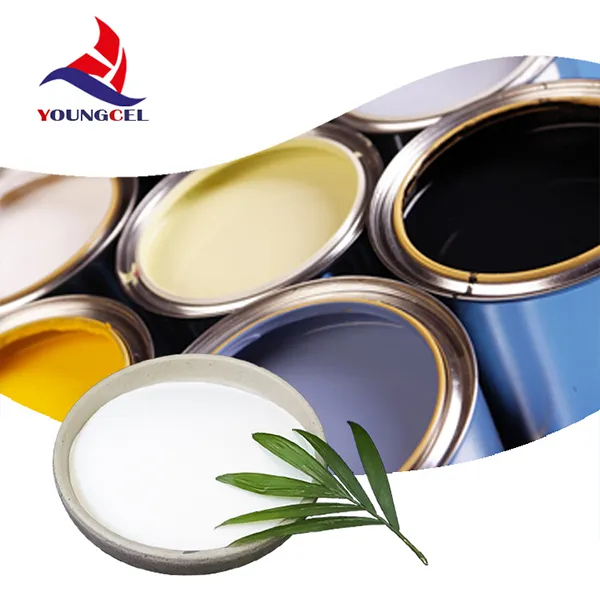The Role of Cellulose-based Paint Thickeners in Coatings
In the world of coatings and paints, achieving the right viscosity and consistency is crucial for both application and final finish. Among the various materials used to modify the rheological properties of paint, cellulose-based thickeners have gained significant attention in recent years. Derived from natural cellulose, these thickeners present an array of advantages that make them preferable in the formulation of water-based paints, especially in the context of eco-friendly and sustainable products.
What Are Cellulose-based Thickeners?
Cellulose-based thickeners are derived from cellulose, a naturally occurring polymer found in the cell walls of plants. The processing of cellulose into thickening agents involves chemical modifications such as hydroxyethylation, hydroxypropylation, and carboxymethylation, which enhance its properties for use in paints. Common cellulose derivatives used as thickeners include hydroxyethyl cellulose (HEC), hydroxypropyl cellulose (HPC), and carboxymethyl cellulose (CMC).
These cellulose thickeners function by increasing the viscosity of paints, allowing for improved application characteristics. They help suspend pigments and other solid particles in the paint, preventing sedimentation and ensuring an even distribution of color and texture.
Benefits of Using Cellulose Thickeners
1. Environmental Sustainability As concerns about environmental impact grow, cellulose-based thickeners stand out for their biodegradable and renewable properties. Sourced from plant materials, they provide a more sustainable alternative to synthetic thickeners derived from petrochemicals. This aligns with the increasing demand for environmentally friendly products in the paint industry.
2. Low Toxicity Cellulose thickeners are generally considered safe and non-toxic, making them suitable for indoor applications where air quality is a concern. Products formulated with cellulose thickeners are often free from volatile organic compounds (VOCs), enhancing user safety and meeting regulatory standards for indoor air quality.
cellulose paint thickener

3. Versatile Application These thickeners are compatible with a wide range of formulations, including emulsions, dispersions, and latex paints. They can modify the flow and leveling characteristics of paints, enhancing the application process across various tools and methods, such as brushes, rollers, and sprayers.
4. Enhanced Performance Cellulose thickeners not only improve viscosity but also confer properties such as water retention, which is crucial for preventing quick drying and ensuring adequate open time during application. This is particularly beneficial in climates that favor rapid evaporation of water-based paints.
5. Cost-effective Although natural thickeners can sometimes have higher upfront costs than synthetic alternatives, their effectiveness in formulations often translates to lower overall costs through reduced waste and improved performance.
Application in Various Paint Types
Cellulose thickeners are particularly effective in a variety of paint formulations, including architectural coatings, industrial paints, and specialty paints. In architectural coatings, they help achieve a uniform film formation and improve the application and finish quality. In industrial applications, cellulose thickeners provide desirable viscosity and stability during storage and application.
Moreover, cellulose thickeners can be tailored to meet specific needs, allowing formulators to create paints with the desired flow characteristics. This customization is beneficial for specialty paints, including those used for artistic applications or detailed work where precision is key.
Conclusion
In summary, cellulose-based paint thickeners represent a valuable resource in the formulation of modern paints. Their sustainable nature, low toxicity, and excellent performance make them ideal for meeting the demands of the contemporary coatings industry. As the trend toward environmentally friendly products continues to grow, the importance of cellulose thickeners is likely to increase. By harnessing the unique properties of cellulose, manufacturers can create high-quality, user-friendly paints that meet both consumer expectations and environmental considerations. Consequently, cellulose thickeners not only enhance the performance of coatings but also contribute to a more sustainable future in the paint industry.
-
The Application and Significance of Construction RdpNewsMay.19,2025
-
Industrial Grade HpmcNewsMay.19,2025
-
Building Coating Adhesive Building Coating Adhesive HpmcNewsMay.19,2025
-
Application Of Hpmc For Detergent For Detergent In DetergentsNewsMay.19,2025
-
Application Of Hpmc Cellulose In Cement-Based MaterialsNewsMay.19,2025
-
Application Of High Quality Hpmc For Construction In The Field Of ConstructionNewsMay.19,2025




